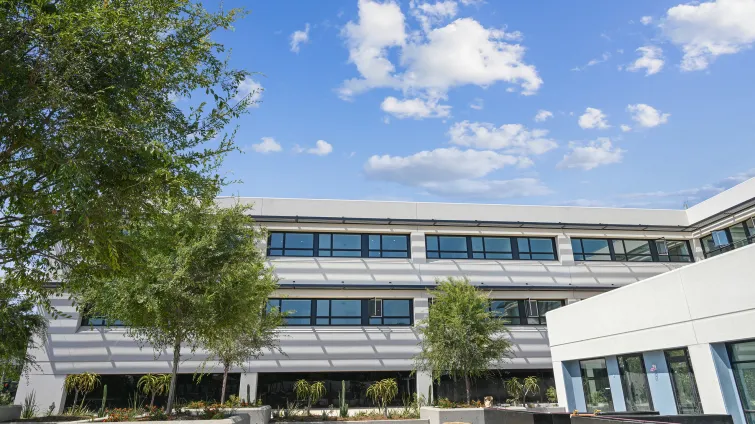
Creative Media & Community Trust (CMCT) has recently converted the top two floors of an office building in Los Angeles into 68 luxury apartment units. The property, located at 701 Hudson Avenue in the Mid-Wilshire district, is part of a growing trend of office-to-residential conversions in L.A. The building’s lower floors will still serve as creative office spaces, combining residential and commercial use within the same structure.
This project was driven by incentives from L.A.’s Adaptive Reuse Ordinance, which encourages the repurposing of existing buildings to accommodate the city’s housing needs. The transformation of underutilized office space into residential apartments is an innovative solution to the increasing demand for housing, especially in urban areas where new land for development is scarce.
Office-to-residential conversions are gaining traction across California. According to a RentCafe study, 31% of conversion projects in California have originated from office spaces, making it the state with the highest number of office-to-residential transformations. Los Angeles, in particular, has become a hub for such adaptive reuse projects, helping to address the ongoing housing shortage while breathing new life into vacant or underused commercial properties.
CMCT’s project at 701 Hudson Avenue reflects this growing movement. The newly converted apartments cater to a demand for high-end residential spaces in prime urban locations. By keeping the ground floors as creative office space, CMCT is offering a mixed-use environment that combines living and working spaces, appealing to modern urban professionals.
This adaptive reuse project highlights a trend that is reshaping the real estate landscape in major cities. As the demand for office space continues to decline due to remote working trends, more developers are looking to convert existing commercial properties into residential units. This not only helps meet housing demand but also maximizes the value of underutilized real estate.
The success of office-to-residential conversions, like CMCT’s project, suggests that more such projects will be seen in the future. Developers are expected to increasingly explore adaptive reuse strategies to repurpose outdated office buildings, offering a viable solution to housing shortages while revitalizing urban areas.
This transformation is a testament to how creative urban planning can repurpose existing structures to meet evolving city needs.








